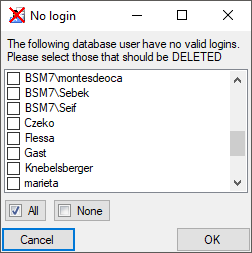Diversity exsiccatae
Login Administration
To administrate the logins on the database server, their permissions and roles respectively as well as access to projects choose Administration - Database - Logins ... from the menu. A window will open as shown below.
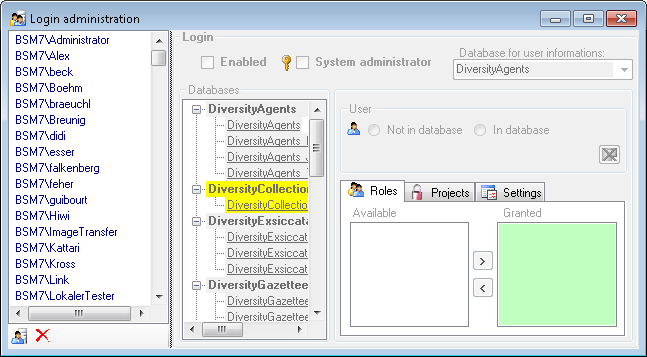
To set the website where information about details concerning the
General Data Protection
Regulation
are shown, click on the 
To see the current activity on the server click on the

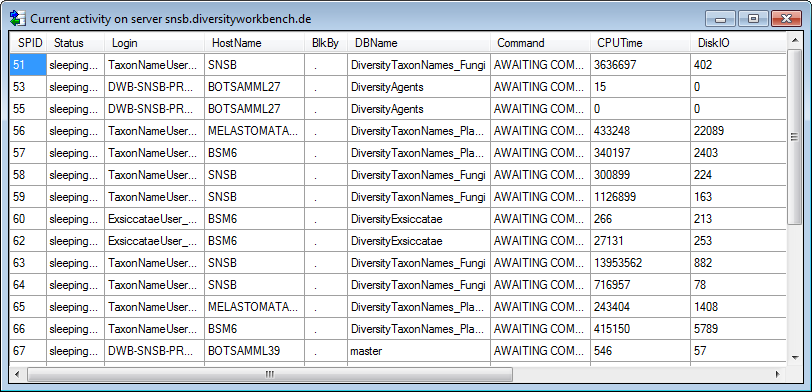
To administrate the linked servers, click on the

To send a feedback click on the 
Statistics
To see the activity of a login click on the 
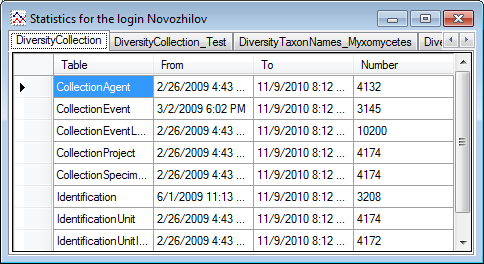
Creation of login
To create a new login click on the 

Here you can enter the name of the new login, the password and the
information about the user which will be stored in a DiversityAgents
database. You may either create a new entry in this database or select
an existing one: Click on the 
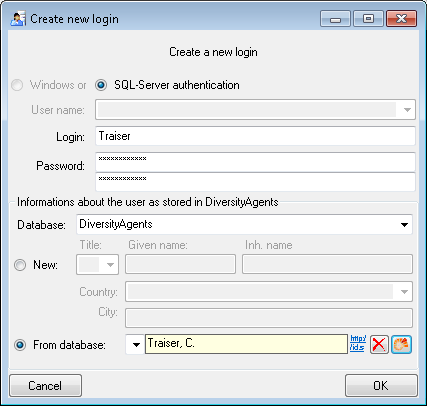
Copy a login
To copy a login including all permissions etc. into a new login, select
the original login in the list and click on the

Edit a login
To edit the access for a login on the server select the login in the
list. If a login should be disabled 

All databases on the server will be listed with the current database showing a yellow background. The databases where the login has [no access] will be listed in [gray] while the databases accessible for a login are black.
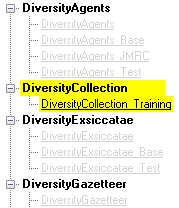
Access of a login to a database
To allow the access to a database select the database from the list and choose database as shown below.

The state 

Roles of a login in a database
Use the > and < buttons to add or remove roles for the login in the database (see below).
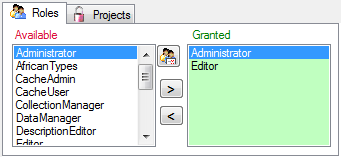
To see the detailed permissions of a role, select it in the list of
[Available] roles and click on the

As a database owner you can edit the permissions and role memberships
with the 


Projects for a login in a database
Depending on the database you can edit the list of projects accessible
for a login (see below). Projects are related to the module
DiversityProjects. To get additional information about a project select
it in the list and click on the 

Starting with database version 02.05.35 next to the projects with full
access, a second list provides projects with [Read
Only] access (see image
below). Use the 


To load additional projects click on the Load projects


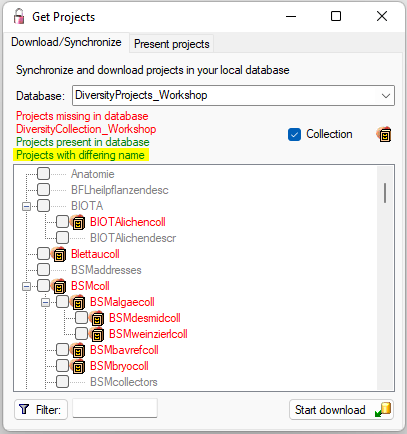
To see an overview of the users within a project select one of the
project in either list and click on the corresponding button

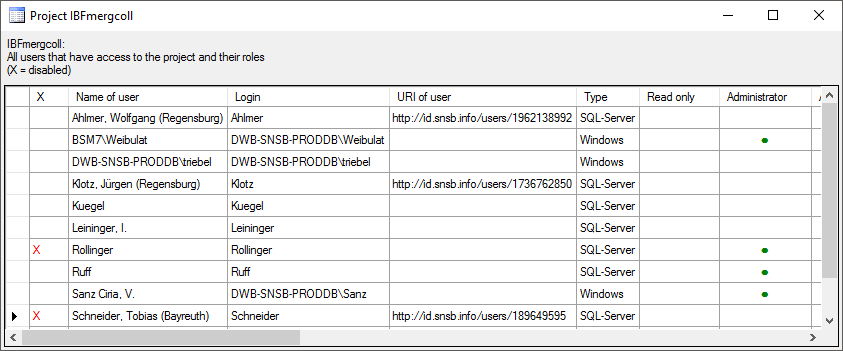
To add or remove a role for a login, select the corresponding field and
choose 


Settings of a login in a database
Depending on the database you can edit the settings of a login as shown below.
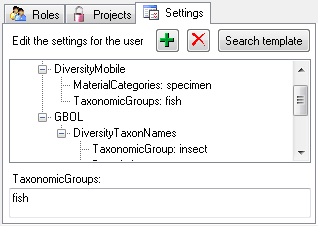
If you wish to use settings already defined for another login, click on the Search template button. A window (see below) will open where you can choose among the settings defined for logins in the database.
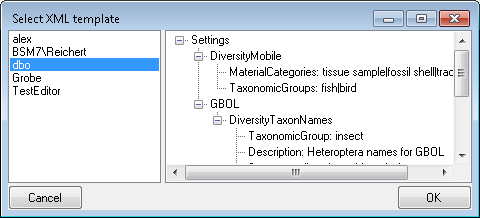
Overview for a login
If you want to see an overview of all permissions and project for a
login, click on the  button. A window as shown
below will open. It lists all
button. A window as shown
below will open. It lists all 




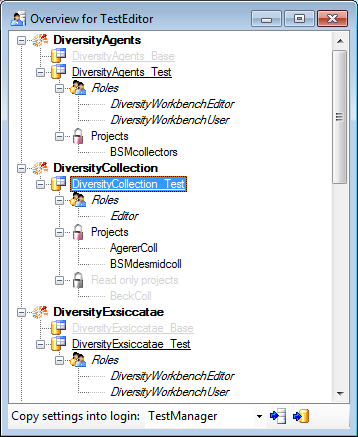
To copy the permissions and projects of the current login to another
login, select the login where the settings should be copied to from the
list at the base of the window and click on the  button to copy the settings for all databases or the
button to copy the settings for all databases or the

Overview for a database
If you see an overview of all user and roles in a database, click on the





To remove a user, select it in the list and click on the

Correction of logins
If you select one of the databases, at the base a
 button may appear. This indicates that
there are windows logins listed where the name of the login does not
match the logins of the server. This may happen if e.g. a database was
moved from one server to another. To correct this, click on the button.
A list of deviating logins will be shown, that can be corrected
automatically.
button may appear. This indicates that
there are windows logins listed where the name of the login does not
match the logins of the server. This may happen if e.g. a database was
moved from one server to another. To correct this, click on the button.
A list of deviating logins will be shown, that can be corrected
automatically.
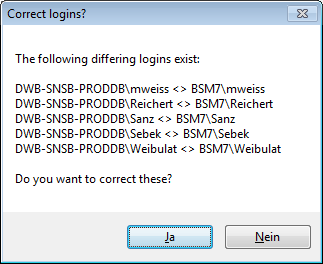
If logins with the same name but different server are found, one of them has to be deleted to make the correction possible. You will get a list where you can select those that should be removed.
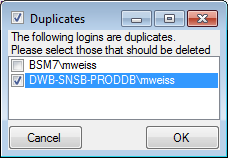
Select the duplicate logins that should be removed and click OK.
To find users within the database that have no valid login, click on the
 button. A window as shown below will open,
listing the users without a login. Select those that should be removed
and click OK. This will include a removal from the collection
managers.
button. A window as shown below will open,
listing the users without a login. Select those that should be removed
and click OK. This will include a removal from the collection
managers.
